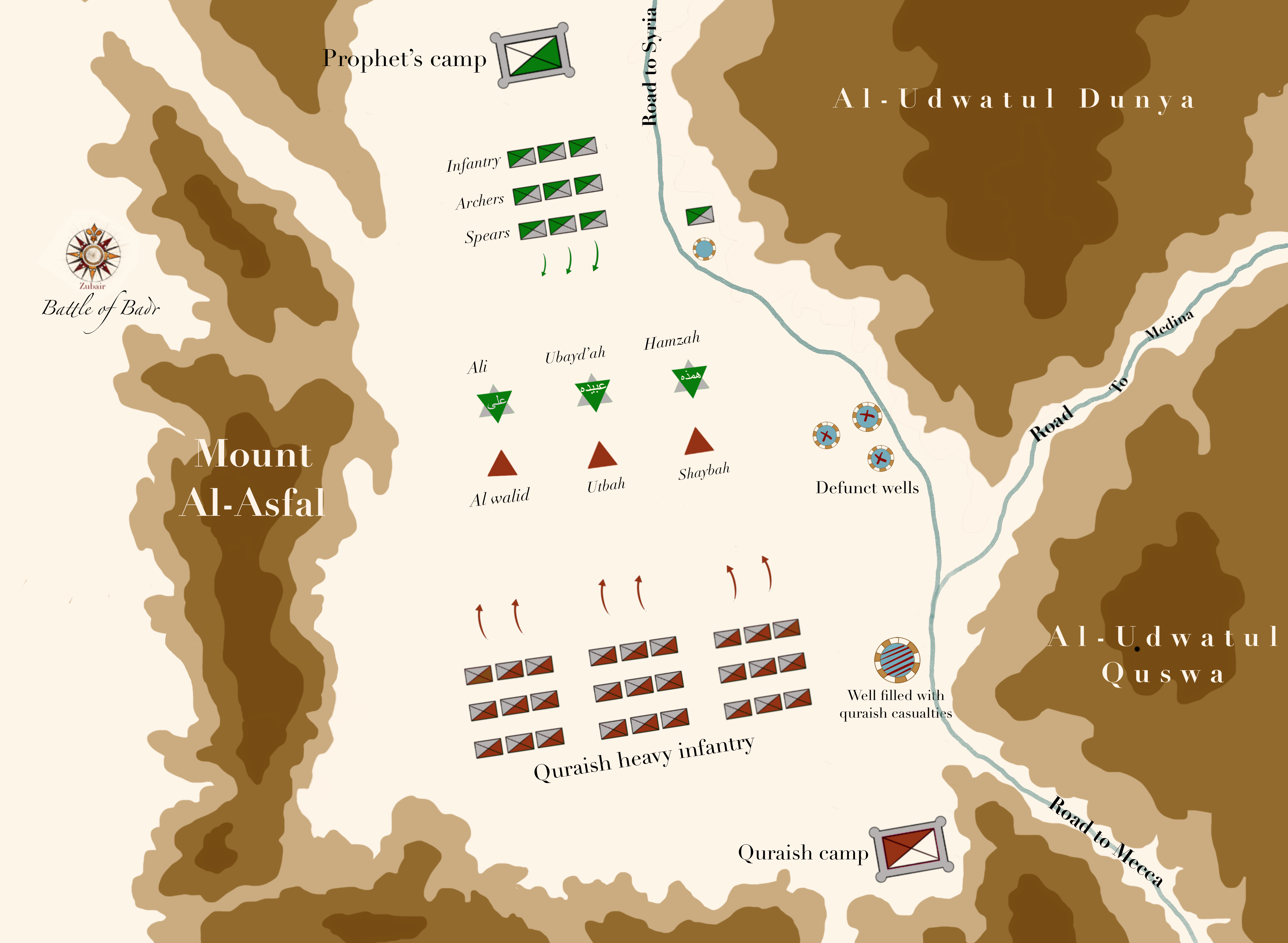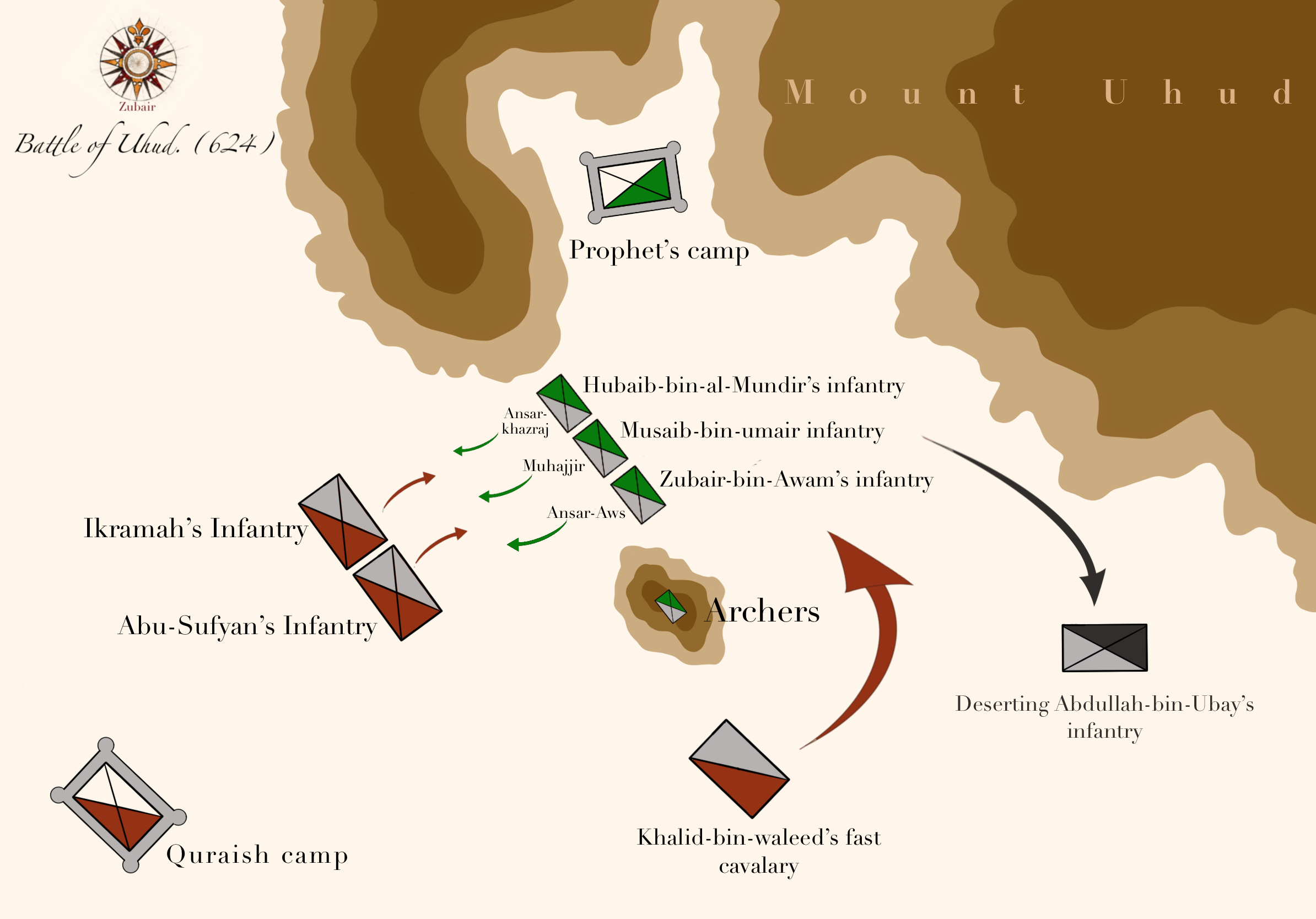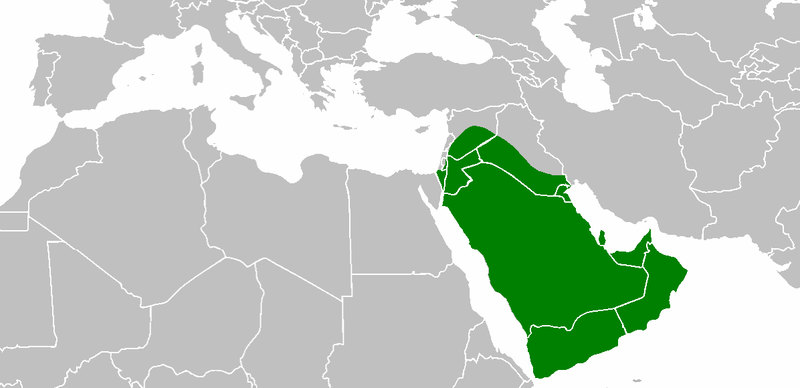|
Safwan Ibn Umayah
Ṣafwān ibn Umayya ( ar, صفوان بن أمية; died 661) was a '' sahabi'' (companion) of the Islamic prophet Muhammad.Muhammad ibn Jarir al-Tabari. ''Tarikh al-Rusul wa'l-Muluk''. Translated by Landau-Tasseron, E. (1998). ''Volume 39: Biographies of the Prophet's Companions and Their Successors''. Albany: State University of New York Press. Family He was from the Banu Jumah clan of the Quraysh tribe in Mecca. His father was Umayyah ibn Khalaf, one of the elders of the Quraysh; his mother was Karima bint Ma'mar ibn Habib.Muhammad ibn Umar al-Waqidi. ''Kitab al-Maghazi''. Translated by Faizer, R., Ismail, A., & Tayob, A. K. (2011). ''The Life of Muhammad''. London & New York: Routledge. He had a paternal brother named AliMuhammad ibn Ishaq. ''Sirat Rasul Allah''. Translated by Guillaume, A. (1955). ''The Life of Muhammad''. Oxford: Oxford University Press. and a maternal brother named Jabala ibn al-Hanbal. Safwan married at least five times. # Barza bint Masud, from the ... [...More Info...] [...Related Items...] OR: [Wikipedia] [Google] [Baidu] |
Sahabi
The Companions of the Prophet ( ar, اَلصَّحَابَةُ; ''aṣ-ṣaḥāba'' meaning "the companions", from the verb meaning "accompany", "keep company with", "associate with") were the disciples and followers of Muhammad who saw or met him during his lifetime, while being a Muslim and were physically in his presence. "Al-ṣaḥāba" is definite plural; the indefinite singular is masculine ('), feminine ('). Later Islamic scholars accepted their testimony of the words and deeds of Muhammad, the occasions on which the Quran was revealed and other various important matters of History of Islam, Islamic history and practice. The testimony of the companions, as it was passed down through trusted chains of narrators (''Hadith studies#Sanad and matn, isnad''s), was the basis of the developing Islamic culture, Islamic tradition. From the traditions (''hadith'') of the life of Muhammad and his companions are drawn the Muslim way of life (''sunnah''), the code of conduct (''s ... [...More Info...] [...Related Items...] OR: [Wikipedia] [Google] [Baidu] |
Battle Of Badr
The Battle of Badr ( ar, غَزْوَةُ بَدِرْ ), also referred to as The Day of the Criterion (, ) in the Quran, Qur'an and by Muslims, was fought on 13 March 624 CE (17 Ramadan (calendar month), Ramadan, 2 Anno Hegirae, AH), near the present-day city of Badr, Saudi Arabia, Badr, Madinah Province, Al Madinah Province in Saudi Arabia. Muhammad, commanding an army of his Companions of the Prophet, Sahaba, defeated an army of the Quraysh led by Amr ibn Hishām, better known as Abu Jahl. The battle marked the beginning of the six-year war between Muhammad and his tribe. Prior to the battle, the Muslims and the Meccans had fought several smaller skirmishes in late 623 and early 624. Muhammad took keen interest in capturing Meccan caravans after Hegira, his migration to Medina, seeing it as repayment for his people, the Muhajirun. A few days before the battle, when he learnt of a Makkan caravan returning from the Levant led by Abu Sufyan ibn Harb, Muhammad gathered a small E ... [...More Info...] [...Related Items...] OR: [Wikipedia] [Google] [Baidu] |
Umrah
The ʿUmrah ( ar, عُمْرَة, lit=to visit a populated place) is an Islamic pilgrimage to Mecca (the holiest city for Muslims, located in the Hejazi region of Saudi Arabia) that can be undertaken at any time of the year, in contrast to the '' Ḥajj'' (; "pilgrimage"), which has specific dates according to the Islamic lunar calendar. In accordance to the ''Shariah'' (Law of Islam), for both pilgrimages, a Muslim must first assume ''Ihram'', a state of purification achieved by completing cleansing rituals, wearing the prescribed attire, and abstaining from certain actions. This must be attained when reaching a ''Miqat'', a principal boundary point in Mecca, like Dhu 'l-Hulaifah, Juhfah, Qarnu 'l-Manāzil, Yalamlam, Zāt-i-'Irq, Ibrahīm Mursīyah, or a place in Al-Hill. Different conditions exist for air travelers, who must observe Ihram once entering a specific perimeter in the city. Umrah requires Muslims to perform two key rituals, ''Tawaf'' and ''Sa'i''. Tawaf is ... [...More Info...] [...Related Items...] OR: [Wikipedia] [Google] [Baidu] |
Khalid Ibn Al-Walid
Khalid ibn al-Walid ibn al-Mughira al-Makhzumi (; died 642) was a 7th-century Arab military commander. He initially headed campaigns against Muhammad on behalf of the Quraysh. He later became a Muslim and spent the remainder of his career in service to Muhammad and the first two Rashidun successors: Abu Bakr and Umar. Following the establishment of the Rashidun Caliphate, Khalid held a senior command in the Rashidun army; he played the leading role in the Ridda Wars against rebel tribes in Arabia in 632–633, the initial campaigns in Sasanian Iraq in 633–634, and the conquest of Byzantine Syria in 634–638. As a horseman of the Quraysh's aristocratic Banu Makhzum, which ardently opposed Muhammad, Khalid played an instrumental role in defeating Muhammad and his followers during the Battle of Uhud in 625. In 627 or 629, he converted to Islam in the presence of Muhammad, who inducted him as an official military commander among the Muslims and gave him the title of (). Duri ... [...More Info...] [...Related Items...] OR: [Wikipedia] [Google] [Baidu] |
Umar
ʿUmar ibn al-Khaṭṭāb ( ar, عمر بن الخطاب, also spelled Omar, ) was the second Rashidun caliph, ruling from August 634 until his assassination in 644. He succeeded Abu Bakr () as the second caliph of the Rashidun Caliphate on 23 August 634. Umar was a senior companion and father-in-law of the Islamic prophet Muhammad. He was also an expert Muslim jurist known for his pious and just nature, which earned him the epithet ''al-Fārūq'' ("the one who distinguishes (between right and wrong)"). Umar initially opposed Muhammad, his distant Qurayshite kinsman and later son-in-law. Following his conversion to Islam in 616, he became the first Muslim to openly pray at the Kaaba. Umar participated in almost all battles and expeditions under Muhammad, who bestowed the title ''al-Fārūq'' ('the Distinguisher') upon Umar, for his judgements. After Muhammad's death in June 632, Umar pledged allegiance to Abu Bakr () as the first caliph and served as the closest adviser t ... [...More Info...] [...Related Items...] OR: [Wikipedia] [Google] [Baidu] |
Treaty Of Hudaybiyyah
The Treaty of Hudaybiyyah ( ar, صُلح ٱلْحُدَيْبِيَّة, Ṣulḥ Al-Ḥudaybiyyah) was an event that took place during the time of the Islamic prophet Muhammad. It was a pivotal treaty between Muhammad, representing the state of Medina, and the Qurayshi tribe of Mecca in January 628 (corresponding to Dhu al-Qi'dah, AH 6). It helped to decrease tension between the two cities, affirmed peace for a period of 10 years, and authorised Muhammad's followers to return the following year in a peaceful pilgrimage, later known as The First Pilgrimage. Attempted pilgrimage Muhammad had a premonition that he entered Mecca and did tawaf around the Ka'bah. His companions in Madinah were delighted when he told them about it. They all revered Mecca and the Kaaba and they learned to do tawaf there. In 628, Muhammad and a group of 1,400 Muslims marched peacefully without arms towards Mecca, in an attempt to perform the Umrah (pilgrimage). They were dressed as pilgrims, and b ... [...More Info...] [...Related Items...] OR: [Wikipedia] [Google] [Baidu] |
Zayd Ibn Haritha
Zayd ibn Haritha ( ar, زَيْد ٱبْن حَارِثَة, ') (), was an early Muslim, sahabah and the adopted son of the Islamic prophet, Muhammad. He is commonly regarded as the fourth person to have accepted Islam, after Muhammad's wife Khadija, Muhammad's cousin Ali, and Muhammad's close companion Abu Bakr, Zayd was a slave in Khadija's household for several years, but Muhammad later freed and legally adopted Zayd as his own son. Zayd was afterwards married to two prominent women of Muhammad's household, including his cousin Zaynab and his mother's servant Umm Ayman. Zayd was a commander in the early Muslim army and led several early military expeditions during the lifetime of Muhammad. Zayd led his final expedition in September 629 CE, and set out to raid the Byzantine city of Bosra. However the Muslim army was intercepted by Byzantine forces and Zayd was subsequently killed at the Battle of Mu'tah. Childhood Zayd is said to have been ten years younger than Muhammad, sugg ... [...More Info...] [...Related Items...] OR: [Wikipedia] [Google] [Baidu] |
Expedition Of Zaid Ibn Haritha (Al-Is)
Expedition of Zayd ibn Harithah in al-Is took place in September, 627AD, 5th month of 6AH of the Islamic calendarfree onlineNote: Book contains a list of battles of Muhammad in Arabic, English translation availabl/ref> Caravan Raid Zayd ibn Harithah, in Jumada Al-Ula 6 Hijri, at the head of a 170 horsemen, set out to a place called Al-is, intercepted a caravan of Quraish led by Abu al-As, Muhammad's relative and captured their camels as booty. Among the prisoners was Abu al-As, the son-in-law of Muhammad, the husband of Zaynab, Muhammad’s eldest daughter. Abu al-As was the nephew of Khadija (Muhammad’s first wife) and a prosperous trader in Mecca. When Muhammad received the prophet hood, Abu al-As declined to embrace Islam. But he also refused to divorce Zaynab at the insistence of the Quraysh. Abul-As escaped and took refuge in Zaynab’s house. He begged her to ask Muhammad for the restitution of his wealth. Muhammad recommended, but without coercion, that the people do ... [...More Info...] [...Related Items...] OR: [Wikipedia] [Google] [Baidu] |
Battle Of The Trench
The Battle of the Trench ( ar, غزوة الخندق, Ghazwat al-Khandaq), also known as the Battle of Khandaq ( ar, معركة الخندق, Ma’rakah al-Khandaq) and the Battle of the Confederates ( ar, غزوة الاحزاب, Ghazwat al-Ahzab), took place in the year 627; it was a 27-day-long defense by Muslims of Yathrib (now Medina) from Arab and Jewish tribes. The strength of the confederate armies is estimated at around 10,000 men with six hundred horses and some camels, while the Medinan defenders numbered 3,000. The largely outnumbered defenders of Medina, mainly Muslims led by the Islamic prophet Muhammad, dug a trench on the suggestion of Salman the Persian, which, together with Medina's natural fortifications, rendered the confederacy's cavalry (consisting of horses and camels) useless, locking the two sides in a stalemate. Hoping to make several attacks at once, the confederates persuaded the Muslim-allied Medinan Jews, Banu Qurayza, to attack the city from the ... [...More Info...] [...Related Items...] OR: [Wikipedia] [Google] [Baidu] |
Abu Bakr
Abu Bakr Abdallah ibn Uthman Abi Quhafa (; – 23 August 634) was the senior companion and was, through his daughter Aisha, a father-in-law of the Islamic prophet Muhammad, as well as the first caliph of Islam. He is known with the honorific title al-Siddiq by Sunni Muslims. Abu Bakr became one of the first converts to Islam and extensively contributed his wealth in support of Muhammad's work. He was among Muhammad's closest companions, accompanying him on his migration to Medina and being present at a number of his military conflicts, such as the battles of Badr and Uhud. Following Muhammad's death in 632, Abu Bakr succeeded the leadership of the Muslim community as the first Rashidun Caliph. During his reign, he overcame a number of uprisings, collectively known as the Ridda Wars, as a result of which he was able to consolidate and expand the rule of the Muslim state over the entire Arabian Peninsula. He also commanded the initial incursions into the neighbouring ... [...More Info...] [...Related Items...] OR: [Wikipedia] [Google] [Baidu] |
Battle Of Uhud
The Battle of Uhud ( ar, غَزْوَة أُحُد, ) was fought on Saturday, 23 March 625 AD (7 Shawwal, 3 AH), in the valley north of Mount Uhud.Watt (1974) p. 136. The Qurayshi Meccans, led by Abu Sufyan ibn Harb, commanded an army of 3,000 men toward Muhammad's stronghold in Medina. The battle was the only battle throughout the Muslim–Quraysh War in which the Muslims did not manage to defeat their enemy and it came just a year after the Battle of Badr. Abu Sufyan became the ''de facto'' leader of the Quraish after the death of Amr ibn Hishām at Badr nine months prior. Wanting to avenge the Meccan's losses at the Battle of Badr, he marched upon Medina from Makkah on 10 December 624 AD with a force three times stronger than that of the Meccans at Badr. Another reason for the battle was to protect the trade route of Abu Sufyan's caravans. The Battle of Uhud was the second military encounter between the Meccans and the Muslims and the first one in which the Muslims were on the ... [...More Info...] [...Related Items...] OR: [Wikipedia] [Google] [Baidu] |
Banu Kinanah
The Kinana ( ar, كِنَاَنَة, Kināna) were an Arab tribe based around Mecca in the Tihama coastal area and the Hejaz mountains. The Quraysh of Mecca, the tribe of the Islamic prophet Muhammad, was an offshoot of the Kinana. A number of modern-day tribes throughout the Arab world trace their lineage to the tribe. Location The traditional tribal territory of the Kinana extended from the part of the Tihama coastline near Mecca northeastward to the borders of the territory of their tribal relatives, the Banu Asad. History Origins and branches In the Arab genealogical tradition, the eponymous ancestor of the tribe was Kinana ibn Khuzayma ibn Mudrika ibn Ilyas. The tribe traced its ancestry to Ishmael, who married a woman of the Arab Jurhum tribe and settled in the vicinity of Mecca according to Islamic tradition. The Kinana were polytheists, with their worship centering on the goddess al-Uzza. Islamic tradition holds that the Kinana and the other descendants of Ishmael gr ... [...More Info...] [...Related Items...] OR: [Wikipedia] [Google] [Baidu] |




